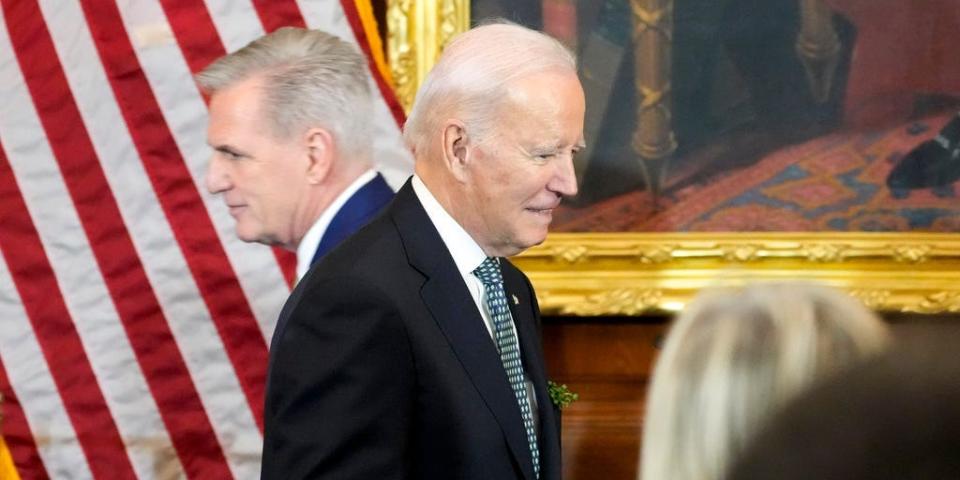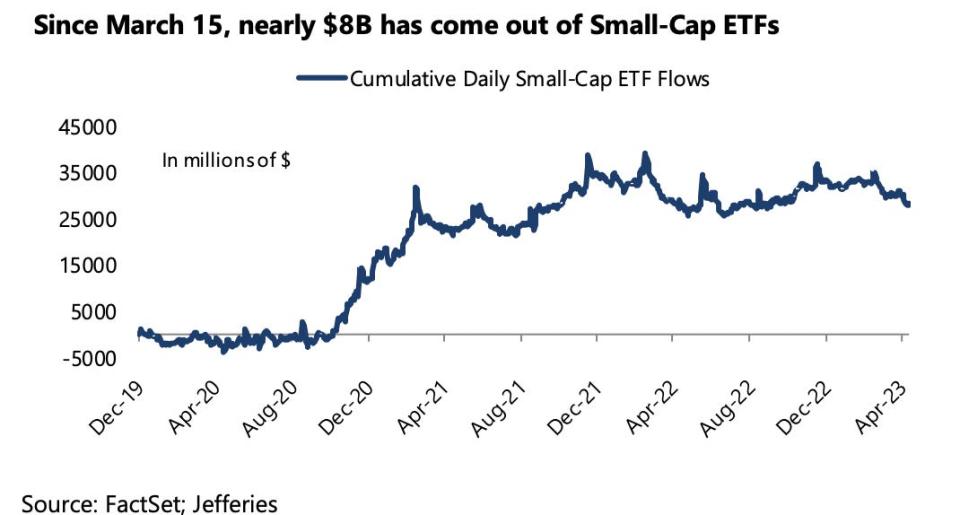
-
Small-cap stocks have been hurt by $8 billion in outflows from ETFs focused on that segment, says Jefferies.
-
That started in March when Silicon Valley Bank and Signature Bank were seized, spooking investors.
-
The debt-ceiling standoff has also hurt small-caps, but not everything is doom and gloom for the group.
Small-cap stocks have bled billions of dollars via exchange-traded funds with tighter bank lending standards a major pressure point for the group, but Jefferies sees some upside drivers for that portion of the US stock market.
The Russell 2000 small-caps index is lagging behind the S&P 500 this year, edging up about 0.3% compared with the gain of 7% for the large-cap index. Zooming out further, the Russell 2000 has dropped by roughly 29% from its November 2021 peak while the S&P 500 has lost 14% from its high logged in January 2022.
“Banks are a big part of small caps and are headwinds for the size segment,” Jefferies strategist Steven DeSanctis wrote in a Wednesday research note.
The other overhang is the debate between lawmakers over raising the $31 trillion debt ceiling that’s needed to pay the country’s bills and avoid a default.
Meanwhile, small-cap stocks, which make up just over 4% of the equity market, tend to perform worse than large-caps when the economy is veering into a recession. Federal Reserve staff economists expect a “mild recession” to begin later in 2023.
“All of these concerns have been manifested in the fact that nearly $8 billion has been withdrawn from the size segment’s ETFs since March putting pressure on performance,” DeSanctis said. “If outflows slow or stop, this would help the size segment.”
It was in March when Silicon Valley Bank and Signature Bank were seized by regulators in the first bank failures since the global financial crisis, triggering an outflow of billions of dollars from other small to mid-sized banks.
Another headwind for small-caps is further tightening in lending standards by banks which started after the Fed began ramping up interest rates to tame hot inflation. “Credit is going to be challenging for smaller companies and more costly,” said Jefferies.
Meanwhile, the current stalemate between Republicans and Democrats on the debt ceiling doesn’t bode well for small-cap stocks, which slid by 25% during 2011 debt standoff.
But there are somewhat encouraging elements for small-caps too.
For one, “we don’t think the banking crisis is systemic,” said Jefferies. While credit is now harder to come by and debt levels at smaller companies are higher than average, “balance sheets are in better shape with more cash.”
And even though the debt-ceiling issue hurts small-caps, “absolute valuations are below fair value. Last time our absolute model was here, small rallied over 15%,” said DeSanctis.
Reports on Wednesday suggested President Joe Biden and House Majority Leader Kevin McCarthy were making progress toward reaching a debt-limit deal that would avert a US debt default, which could come as soon as June 1 without a deal.
“We don’t see everything as doom & gloom for the size segment,” he added, noting that a 10% drop in the US dollar is among the macro factors that have improved and are supportive of small caps.

Read the original article on Business Insider

